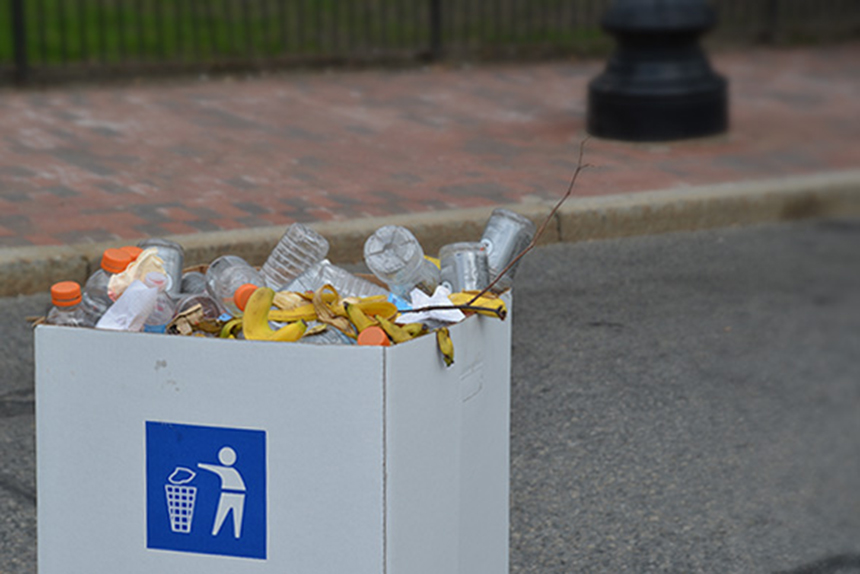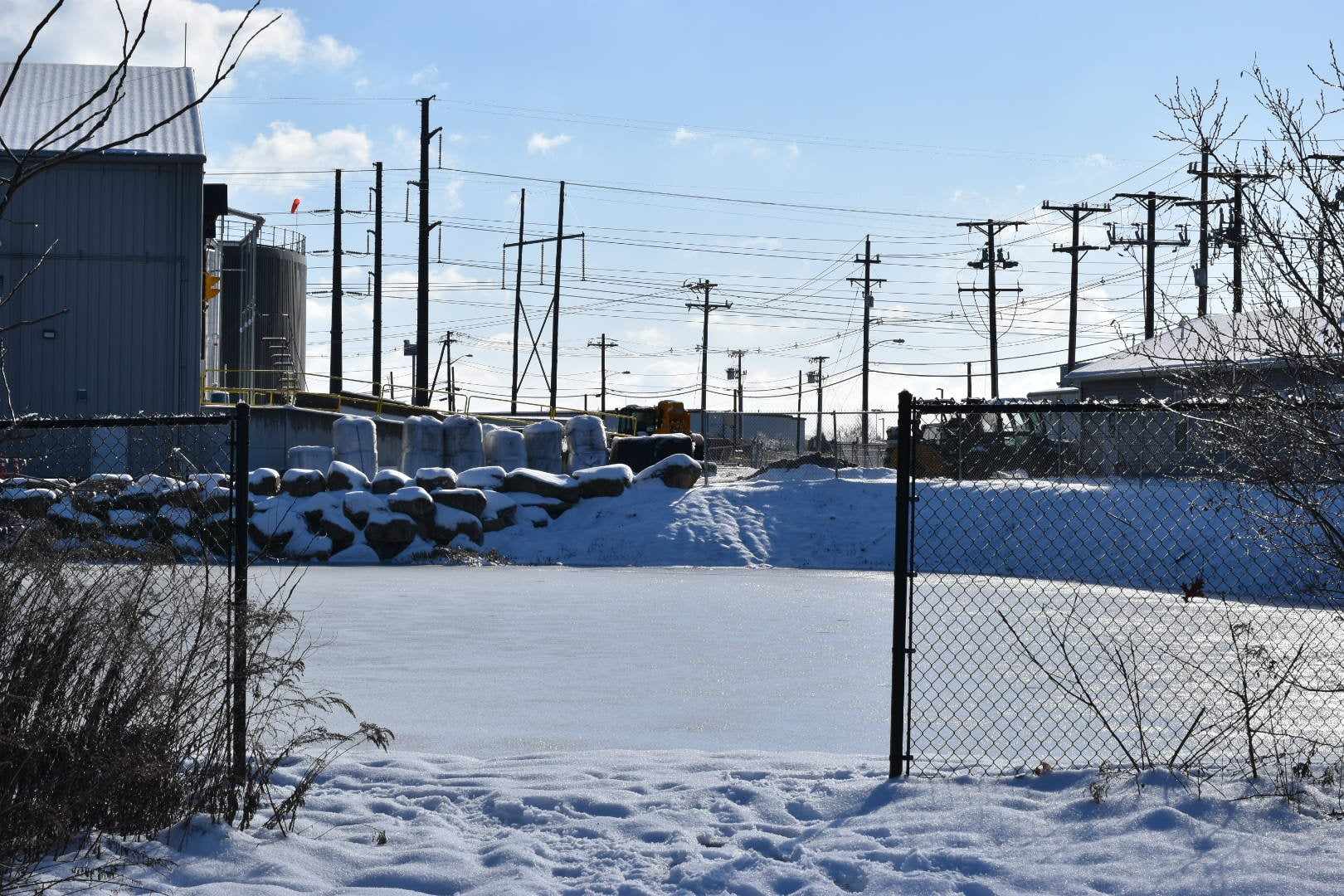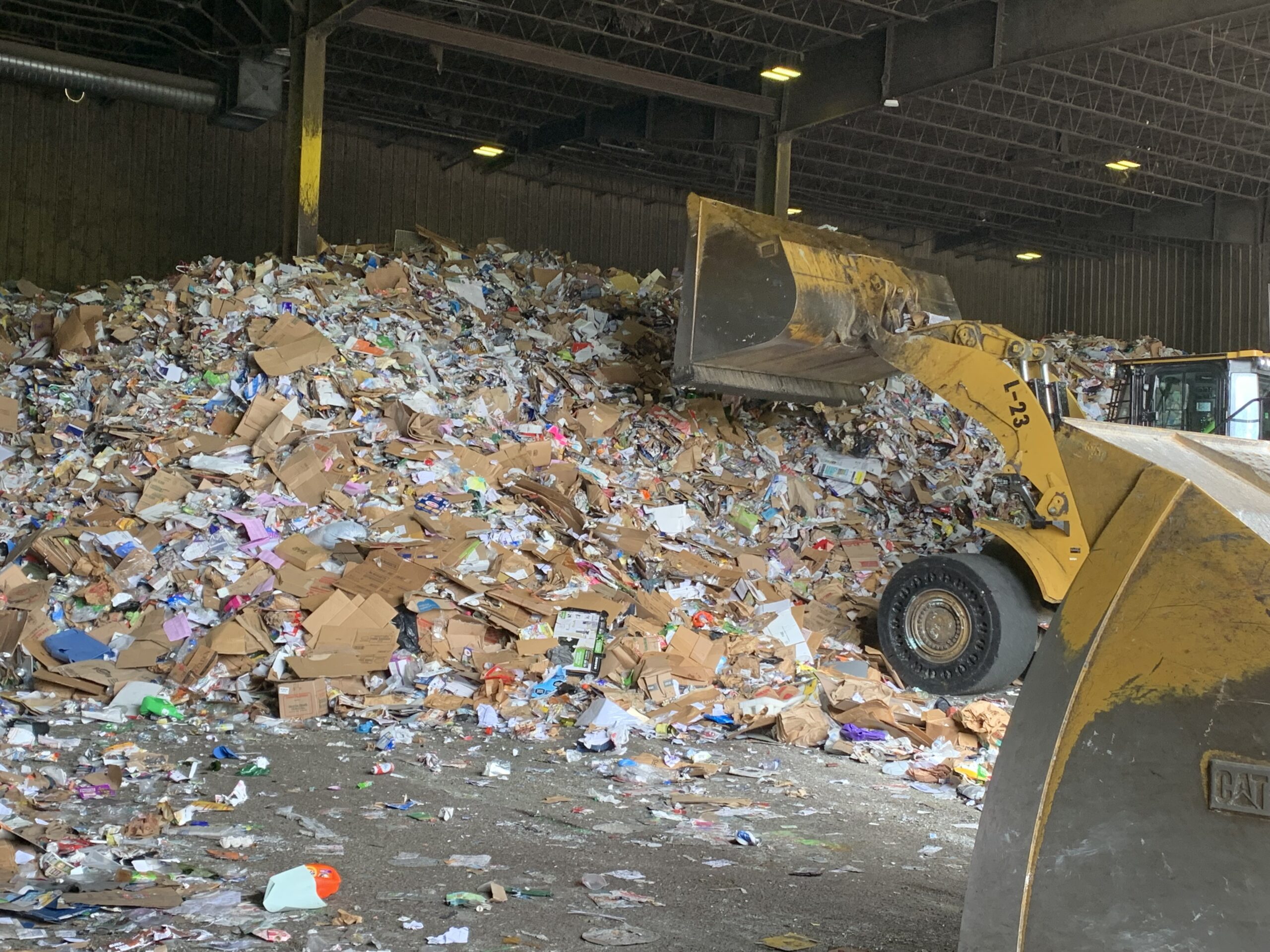Broken Glass Provides Cheap Cover at State Landfill
February 2, 2010
JOHNSTON, R.I. — All Rhode Island residents are required to recycle, and most of them fill their green and blue bins weekly, put them out at the curb and bring them in when they are empty, without a second thought as to how these thrown-out materials are made, or what happens to them after they are collected.
When the blue bins, for example, are hauled to the curbside, the trip often includes a symphony of clicking glass.
From mayonnaise jars to windowpanes, glass is an ever-present part of our lives. Though more plastic containers now are being used, glass still represents a significant percentage of collected recyclables nationwide.
In Rhode Island, municipal recycling programs collect 17,000 tons of glass annually — or about 17 percent of the recyclables collected statewide, according to the Rhode Island Resource Recovery Corporation (RIRRC), which runs the Central Landfill in Johnston.
Most of the glass that makes its way into the blue bins is called soda-lime glass. This glass is made from three basic ingredients: silica, sodium bicarbonate (soda) and limestone (lime). These components are then heated to 3,047 degrees Fahrenheit. This molten glass is then blown and pressed for container glass, or poured onto a pool of molten metal — usually tin — for float glass, which is used to make windows.
These glasses only differ in the ratio of components. While soda and lime are added to light rum to make a refreshing drink, they are added to the glass-making process for a very different reason. Without them, glass would be water-soluble. That would make it difficult to bottle any liquid, including rum.
The biggest environmental problem glass presents is that it never decomposes. Glass thrown out today will still be glass in a thousand years. Because of this, recycling and reusing glass is an essential part of the planet’s stewardship.
Recycling glass uses less energy than manufacturing it. Every ton of waste glass recycled prevents nearly 700 pounds of carbon dioxide from being released into the atmosphere. Glass that is crushed can be melted and turned into “glassphalt” — asphalt made with up to 20 percent crushed glass, fiberglass and tiles, among other things.
For colored glass to have any market value to a recycler, it must be separated by color, which, according to Sarah Kite, the Resource Recovery Corporation’s director of recycling services, “… is an expensive process, and is best accomplished in states with a container deposit system, where the glass is presorted by hand (by the consumer) …”
The durability of glass makes the reuse of such containers preferable to recycling. Refillable bottles are used extensively in many European countries, Canada and, until relatively recently, in the United States. In Denmark, 98 percent of bottles are refillable and 98 percent of those are returned by consumers.
In some developing nations such as India and Brazil, the high cost of new bottles often forces manufacturers to collect and refill old glass bottles.
Unfortunately, in Rhode Island, neither recycling nor this kind of reuse is practiced. So what happens to all that glass diligently placed in the blue bins? Where does that 17,000 tons of glass go every year?
“Recycled” Rhode Island glass ends up in the state landfill.
“The only glass processor in New England is in northern Massachusetts,” Kite said. “There is another processor in central New York. The transportation costs are far more than the monetary value of the glass. We would gladly ship the glass to a recycler if we could break even on it or make a small profit. We can’t afford to ship it at a loss, and then have to purchase inert material for cover.”
The state’s collected glass is crushed onsite, to reduce its volume, and added to the daily 6- to 8-inch layer of material used to cover the Central Landfill. That cover material is a mixture of organic, inorganic, and inert components, and the RIRRC is authorized, by the state Department of Environmental Management, to use glass as the inert component. If the glass wasn’t crushed and reused in this way, the RIRRC would have to buy a substitute material. Its use as a cover material is a net savings for the state, and a volume savings for the ever-shrinking landfill.
“Our enabling legislation states that we are only required to accept those materials that we can then market,” Kite said. “Depending on where you are in the United States, different colors of glass have different value. In California, the green glass is more valuable because the glass is recycled locally into new wine bottles. On the East Coast, clear glass is the only glass with any value.”
Categories
Join the Discussion
View CommentsYour support keeps our reporters on the environmental beat.
Reader support is at the core of our nonprofit news model. Together, we can keep the environment in the headlines.
We use cookies to improve your experience and deliver personalized content. View Cookie Settings



